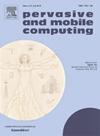A customizable benchmarking tool for evaluating personalized thermal comfort provisioning in smart spaces using Digital Twins
IF 3.5
3区 计算机科学
Q2 COMPUTER SCIENCE, INFORMATION SYSTEMS
引用次数: 0
Abstract
Providing proper thermal comfort to individual occupants is crucial to improve well-being and work efficiency. However, Heating, Ventilation, and Air Conditioning (HVAC) systems are responsible for a large portion of energy consumption and CO2 emissions in buildings. To combat the current energy crisis and climate change, innovative ways have been proposed to leverage pervasive and mobile computing systems equipped with sensors and smart devices for occupant thermal comfort satisfaction and efficient HVAC management. However, evaluating these thermal comfort provision solutions presents considerable difficulties. Conducting experiments in the real world poses challenges such as privacy concerns and the high costs of installing and maintaining sensor infrastructure. On the other hand, experiments with simulations need to accurately model real-world conditions and ensure the reliability of the simulated data.
To address these challenges, we present Co-zyBench, an innovative benchmarking tool that leverages Digital Twin (DT) technology to assess personalized thermal comfort provision systems. Our benchmark employs a simulation-based DT for the building and its HVAC system, another DT for simulating the dynamic behavior of its occupants, and a co-simulation middleware to achieve a seamless connection of the DTs. Our benchmark includes mechanisms to generate DTs based on data such as architectural models of buildings, sensor readings, and occupant thermal sensation data. It also includes reference DTs based on standard buildings, HVAC configurations, and various occupant thermal profiles. As a result of the evaluation, the benchmark generates a report based on expected energy consumption, carbon emission, thermal comfort, and occupant equity metrics. We present the evaluation results of state-of-the-art thermal comfort provisioning systems within a DT based on a real building and several reference DTs.
一个可定制的基准工具,用于使用Digital Twins评估智能空间的个性化热舒适配置
为个体居住者提供适当的热舒适对于提高幸福感和工作效率至关重要。然而,供暖、通风和空调(HVAC)系统占建筑物能源消耗和二氧化碳排放的很大一部分。为了应对当前的能源危机和气候变化,人们提出了创新的方法,利用配备传感器和智能设备的普适和移动计算系统来满足居住者的热舒适和高效的暖通空调管理。然而,评估这些热舒适提供解决方案存在相当大的困难。在现实世界中进行实验会带来一些挑战,比如隐私问题,以及安装和维护传感器基础设施的高成本。另一方面,模拟实验需要准确地模拟真实情况,保证模拟数据的可靠性。为了应对这些挑战,我们提出了Co-zyBench,这是一种利用数字孪生(DT)技术评估个性化热舒适供应系统的创新基准工具。我们的基准测试采用了一个基于模拟的DT来模拟建筑及其HVAC系统,另一个用于模拟居住者动态行为的DT,以及一个联合仿真中间件来实现DT的无缝连接。我们的基准包括基于建筑物的建筑模型、传感器读数和居住者热感觉数据等数据生成dt的机制。它还包括基于标准建筑、暖通空调配置和各种乘员热概况的参考dt。作为评估的结果,基准会根据预期的能源消耗、碳排放、热舒适和居住者公平指标生成报告。我们介绍了基于真实建筑和几个参考DT的DT内最先进的热舒适供应系统的评估结果。
本文章由计算机程序翻译,如有差异,请以英文原文为准。
求助全文
约1分钟内获得全文
求助全文
来源期刊

Pervasive and Mobile Computing
COMPUTER SCIENCE, INFORMATION SYSTEMS-TELECOMMUNICATIONS
CiteScore
7.70
自引率
2.30%
发文量
80
审稿时长
68 days
期刊介绍:
As envisioned by Mark Weiser as early as 1991, pervasive computing systems and services have truly become integral parts of our daily lives. Tremendous developments in a multitude of technologies ranging from personalized and embedded smart devices (e.g., smartphones, sensors, wearables, IoTs, etc.) to ubiquitous connectivity, via a variety of wireless mobile communications and cognitive networking infrastructures, to advanced computing techniques (including edge, fog and cloud) and user-friendly middleware services and platforms have significantly contributed to the unprecedented advances in pervasive and mobile computing. Cutting-edge applications and paradigms have evolved, such as cyber-physical systems and smart environments (e.g., smart city, smart energy, smart transportation, smart healthcare, etc.) that also involve human in the loop through social interactions and participatory and/or mobile crowd sensing, for example. The goal of pervasive computing systems is to improve human experience and quality of life, without explicit awareness of the underlying communications and computing technologies.
The Pervasive and Mobile Computing Journal (PMC) is a high-impact, peer-reviewed technical journal that publishes high-quality scientific articles spanning theory and practice, and covering all aspects of pervasive and mobile computing and systems.
 求助内容:
求助内容: 应助结果提醒方式:
应助结果提醒方式:


